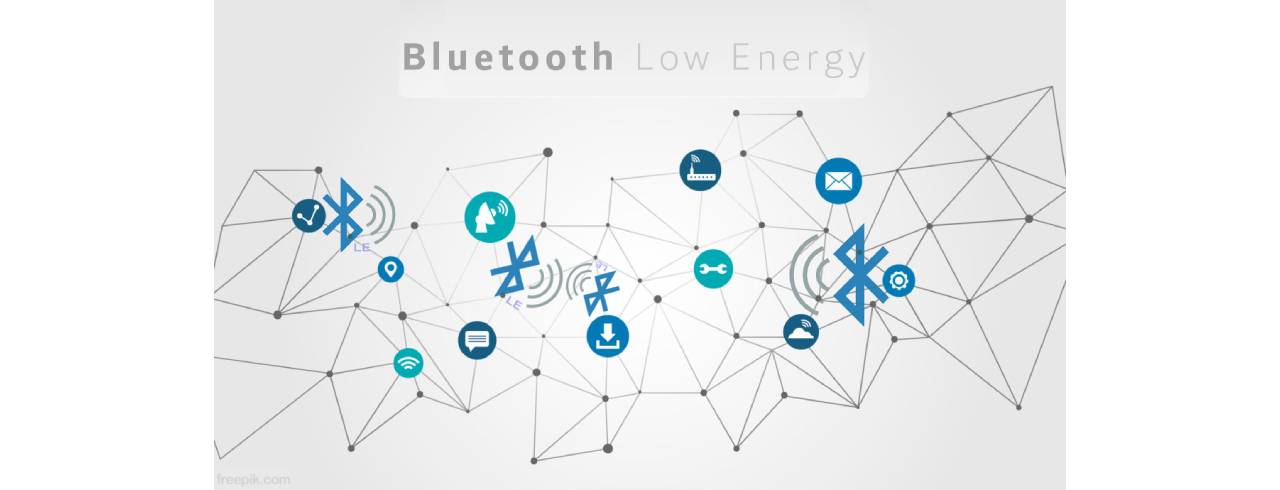You may have heard of Bluetooth, but have you heard of Bluetooth Low Energy?
The initial Bluetooth specification (version 1.0) was released in 1999, five years after Ericsson first developed the technology in Sweden in 1994. As early as the early 2000s, the Special Interest Group, SIG which included IBM, Toshiba, Intel, Microsoft, & Motorola, facilitated the widespread use of Bluetooth wireless communication systems in a wide range of consumer electronics, including smartphones. It wasn't until 2010 that Bluetooth 4.0 le, which included the Bluetooth low-power variety called Bluetooth Low Energy (BLE), Bluetooth LE or Bluetooth Smart, was introduced.

Bluetooth vs Bluetooth low energy is two variations of this technology that differ in many ways, including their advantages and weaknesses and their working mechanisms. We're off!
We utilize low power bluetooth module in our everyday lives to transmit files such as photos, videos, music and so on, which is defined as a short-range wireless connection technology. Whether you're using a phone or a computer, you can utilize it. To link devices fast and without the use of wires, the wireless transmission protocol was established.
As a result, ble Bluetooth low energy has allowed for significant advancements in technology. Indeed, cell phones have improved tremendously to communicate with one other and Bluetooth devices. The proliferation of internet-connected household items has been partly fueled by the widespread use of this wireless technology.
It wasn't long before manufacturers realized the potential of new technologies, but they had to make certain technical adjustments to use them effectively in an industrial setting. Wide deployment was only achievable with Bluetooth V4.0. Bluetooth low energy (BLE) is the name given to this new technology.
"Classic" low power Bluetooth can communicate large amounts of data; Bluetooth Low Energy, sometimes known as "Bluetooth Smart," lets you send smaller amounts. Compared to Bluetooth, Bluetooth Low Energy has a significantly lower power usage. "Low-Energy" is what inspired the name. It is feasible to significantly reduce the active duration of connected devices to increase their autonomy thanks to this technical characteristic. This makes the Bluetooth le range ideal for industrial applications. A high emission frequency isn't necessary for most use cases, nor is it necessary to transmit a massive volume of data.
Thus, Bluetooth Low Energy is ideally adapted for transmitting data such as an action threshold , temperature and brightness, an identification or an hour. Due to its lack of a master/slave relationship, Bluetooth Low Energy (BLE) is far more practical for industrial use than standard Bluetooth.
Differences between Bluetooth & Bluetooth Low Energy in terms of technical operation -
Ø Like Zigbee and other wireless technologies, Bluetooth and BLE use UHF (Ultra High Frequency) radio waves to communicate.
Ø FHSS is used in the Bluetooth standard, which includes BLE, to split the frequency range into 39 channels with a width of 1MHz and then hop between them.
Ø To distribute the information, a variety of routes are used. It can be helpful in an industrial setting to avoid interference with other radio modules by changing the channel up to 1600 times a second.
Let's look at how Bluetooth works on a technical level. A master/slave way of operating underpins the Bluetooth standard, necessitating pairing, which can take time. Using a smartphone as the "master" and a smart speaker as the "slave," you may stream music wirelessly from one device to another.
The master will be aware of the peripherals' presence if they are nearby. Piconet will be formed as a result of this. Once the master establishes the connection, it will swiftly swap between devices to make it appear to have multiple devices connected at once.
Several actions must be taken to ensure the security of a connection of two devices:
1) The Inquisition (inquiry)
2) Integration with the network access point (paging)
3) Understanding the Functions of Access Points
4) Connecting to the access point through a channel
The two gadgets are able to converse once they are connected. It is still necessary to pair even when the private or security key has been registered.
The Generic Access Profile (GAP, Attribute Protocol (ATT). Generic Attribute Protocol (GAAT) are all components of the Bluetooth le communication protocol, as is the Link Layer (LL).
With an optimized and complete radio design of three types of antennas: PCB/Ceramic antenna or u.FL(IPEX) connectors for analogue tuner, the MS50SFB3 module is a highly versatile, ultra-low power cordless BLE 5.0/5.1 Module. Because of its complete regulatory certifications, your Bluetooth design can get to market faster and with less risk.
For those unfamiliar with the term "Bluetooth Low Energy," it's known as BLE. Other names for it are Bluetooth bright and Wibree. Traditional Bluetooth has been modified to use less power.
As the name suggests, Bluetooth Low Energy (BLE) is a low-power version of Bluetooth PAN technology developed to be used by Internet-connected devices. Bluetooth LE, often known as Bluetooth Smart, was developed as an alternative to Bluetooth Classic in the Bluetooth 4.0 specification.
It is safe to use your Bluetooth low energy range daily if its frequency exposure limitations are below those defined by the Federal Communications Commission (FCC). Radiofrequency radiation is measured in milliwatts per square inch (mW/sq. in.) or watts a kilogram (W/kg) by the Federal Communications Commission (FCC).